This book was another of my ‘cheap, old, in-an-op-shop and with an interesting title’ discoveries. I’ve learned a little bit since My Theodosia and I take the time to read a few pages before buying a book now.
The intro to A Star Danced sold me immediately:
CB Cochran! 1911 theatre productions! Over-blown language! I’m so there!
I also realised when reading the introduction that I actually know who Gertrude Lawrence is – one of the generation of pre-WWII British actresses who, because they never made it to Hollywood, have faded into sadly underserved obscurity in recent years.

Gertrude Lawrence photographed by Cecil Beaton Via Culture Concept
In her own day Gertrude Lawrence was the ‘brightest star’ (as the phrase goes) of the London theatre scene, close friends with Noel Coward, and a smashing success on Broadway. A Star Danced is her autobiography, tracing her life from less-than-conventional childhood to international stardom.
Celebrity autobiographies are always a bit hit and miss, but either Gertrude had a lot of help or she could sing, dance, act AND write, because the book is unfailingly interesting and fascinating. The book takes us back and forth between the present, with Gertrude traveling from America to England, around Great Britain, and even to Normandy as she entertains troops in the days before and after D-Day, and the past, as little Gertie determines to be an actress, and pursues this goal with single minded determination.
Gertie’s story is the story of the 20th century: born in 1898 she grows up with Edwardian deals: her scrawny physique and straight hair a dissapointment compared to her plump, curly-haired blond cousin. She comes of age as a chorus girl in the mad ’20s, and comes into her own as a star in the 30s.
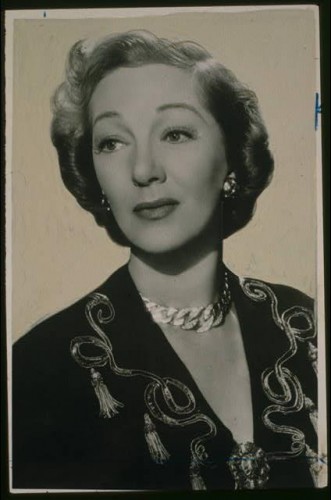
Gertrude Lawrence Via Planet Barberella
And the life she lived as a star! The future Edward VIII and the Windsor Set visited her dressing room, she was the toast of Manhattan in 1924, and Noel Coward wrote Private Lives specifically for her.
More interesting though, is her description of her childhood. Noel Coward, a friend since childhood, described her autobiography as romanticized and inaccurate, but for for the time it is refreshingly frank and revealing. Lawrence describes skipping out on the rent, her drunken father, and the less than savoury reputation of chorus girls without coyness or rancour.
Equally interesting are the detailed observations of wartime Britain and her time entertaining the troops: of eggs being so precious that she carried a dozen on a flight from Newfoundland to England on her lap, of singing to troops the night before they were shipped out to France for D-Day. She was in the first ENSA unit to travel to Normandy after D-Day, and we get a civilians view of the recently liberated France, of a populace both wary and madly grateful.
And finally, you’ll want to know about clothes. A personal view of the London and New York stages in the mad ’20s and during the Depression, and reminisces of WWII are all very well, but what about the textiles? Oooooooh…it’s full of the most delicious tidbits. Making ‘symmetricals’ for her mother in the 1910s (more on that in a later post). Landing her first proper stage role by dressing up in a hobble skirt she made herself and her best hat and pretending to be 5 years older than her actual age. Wearing men’s tuxedos in early revue roles. Being astonished by Raccoon coats in Roaring ’20s New York, and suiting up in ‘Mae Wests’ on her way to Normandy during WWII, before stripping it all off to go swimming in men’s smalls (only they were bigs) off the coast of France. Delicious!
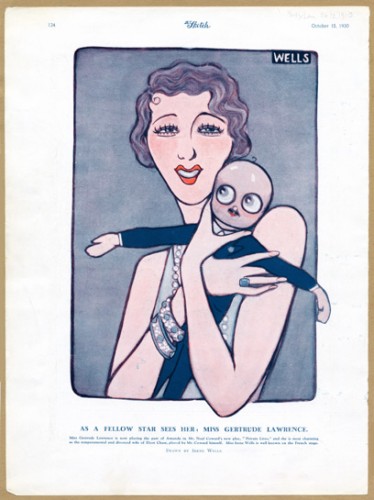
Irene Wells, caricature of Gertrude Lawrence, The Sketch newspaper, October 1930, Via the V&A
As an actress and performer Gertrude was always known more for her personality than her looks. She was a brains and a wit, rather than a classic beauty, and the brains and wit show through in the book, immortalizing her for posterity. It’s a pity that her reputation hasn’t been more immortal.

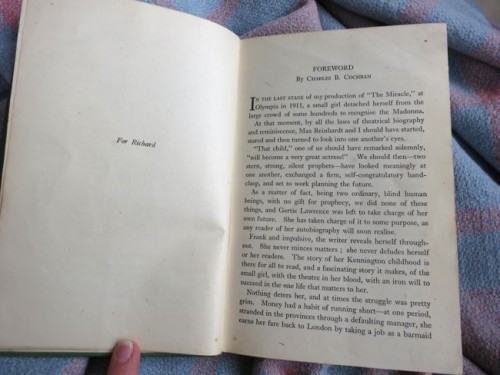
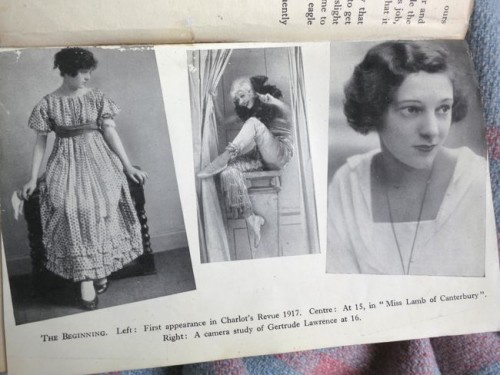
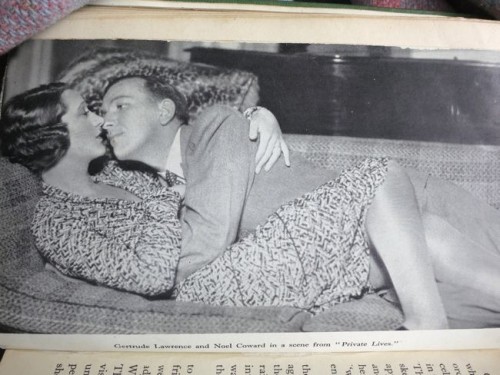


Oh, her spangly 20s dress! Clothes aside, see seems pretty cool!
I know! I WANT IT! So pretty! I’m trying to decide if it is cut ridiculously low under the arm, or if she is wearing a shift under it, or if it has fabric built in.
The change of color suggests a different fabric, but I always imagined flapper clothes being very open, showing that no bra was needed.
How interesting that her photos look so pinched, but her caricature seems so languid! Which was she? Or both!
There was so much cool stuff coming out of Europe during the Entre-Guerre. I remember watching a Canadian film documentary in 1996 with similar neat things going on, totally unknown thanks to it being eclipsed by the Golden Age of Movies. (Silents are sooo much more interesting, though!)
Silent film (And early talkies) remind me so much of cartoons: They can be overdubbed into so many different languages, and have great effect in so many cultures. Could anime exist if it were shot in ‘real life’?
I’m so glad you published this. I hope I can find a copy! I LOVE any book that gives a glimpse of fashion, culture, and women’s lives in the past. And thanks for your review- very interesting.
Sounds like a very good find!
Your reviews often make me wish I could get these books, and that’s even harder where I live… Still, I’m glad to get these glimpses you give us, because your reviews are always interesting. 🙂
eBay is the best friend of those of us who live at the far ends of the earth. There are several copies there, but some of the postage is silly.
Given my current budget, eBay is more of an enemy… But thanks for reminding me.